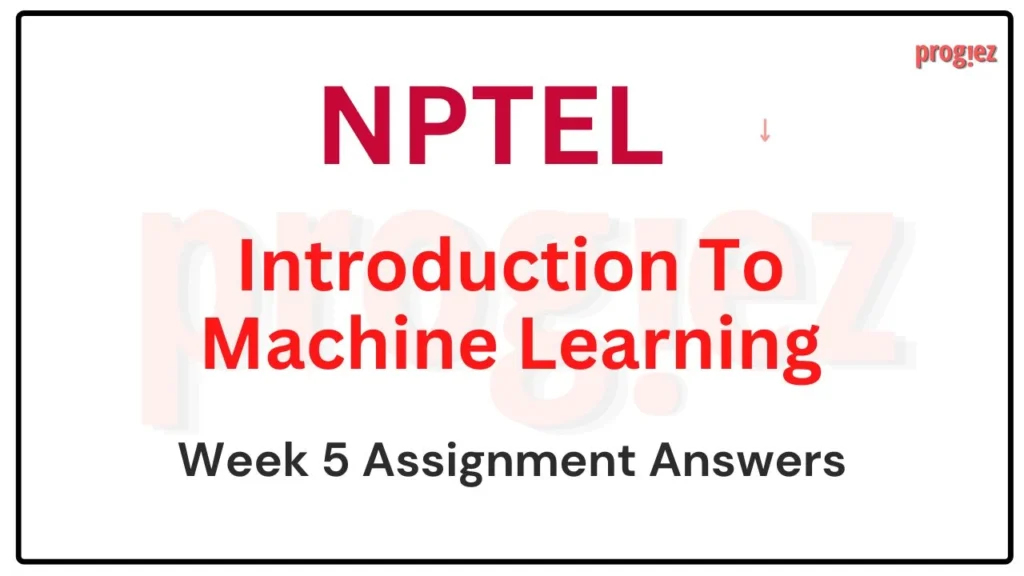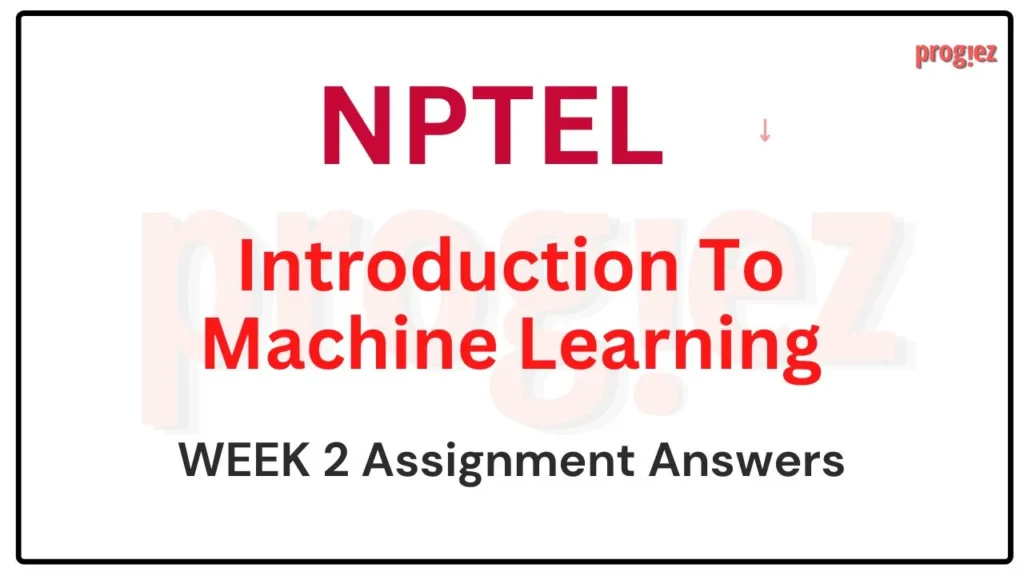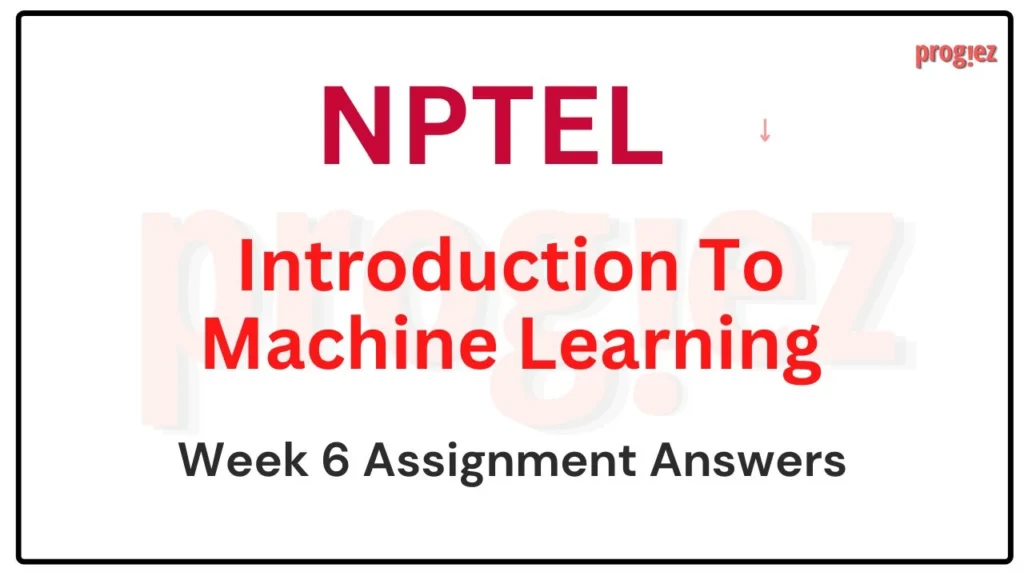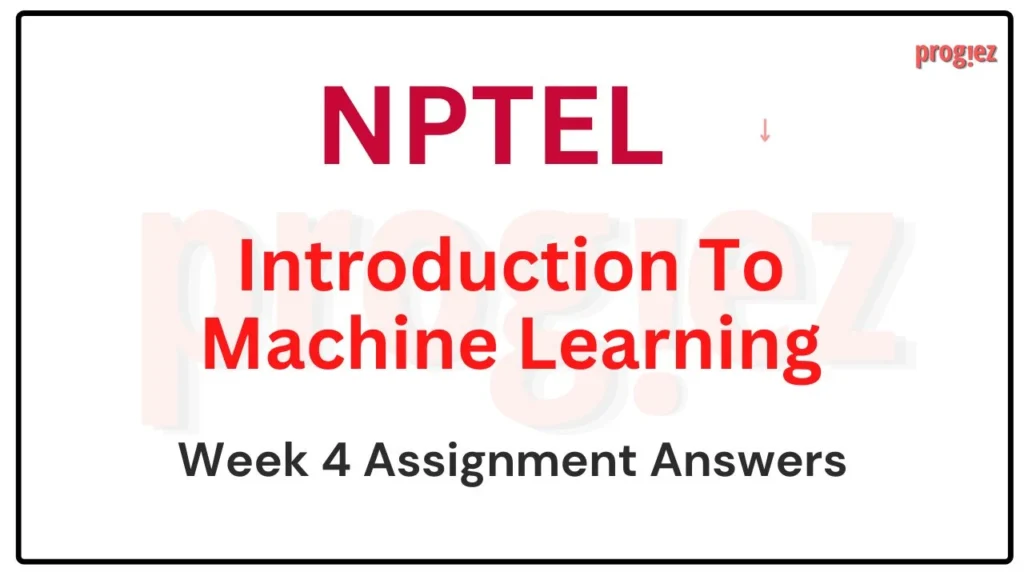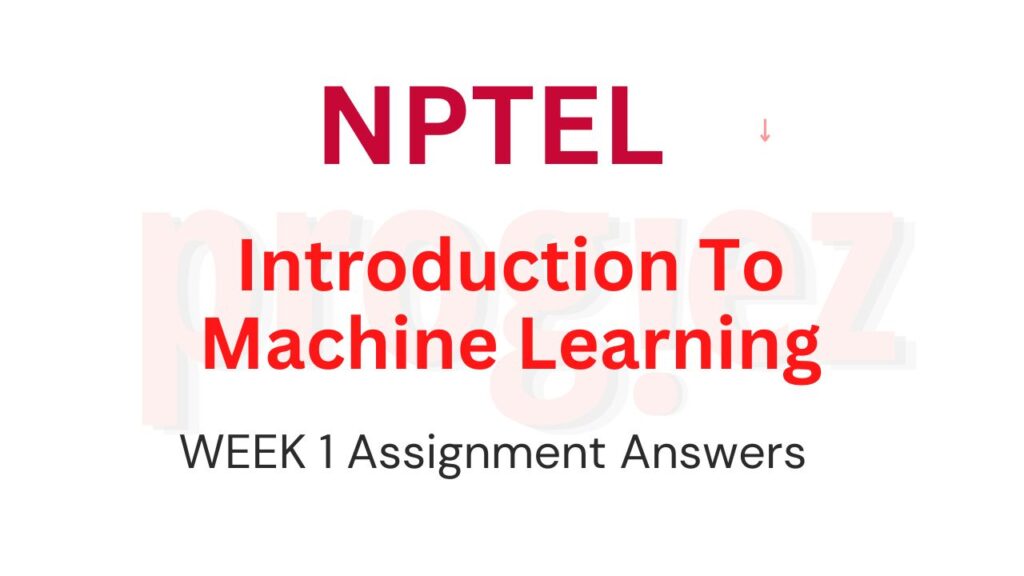NPTEL Introduction To Machine Learning IITKGP ASSIGNMENT 6
These are solutions for NPTEL Introduction To Machine Learning IITKGP ASSIGNMENT 6 Week 6
Course Name: Introduction To Machine Learning IITKGP
Link to Enroll: Click Here
Q1. In training a neural network, we notice that the loss does not increase in the first few starting epochs: What is the reason for this?
A) The learning Rate is low.
B) Regularization Parameter is High.
C) Stuck at the Local Minima.
D) All of these could be the reason.
Answer: d
Q2. What is the sequence of the following tasks in a perception?
I) Initialize the weights of the perceptron randomly.
II) Go to the next batch of data set.
III) If the prediction does not match the output, change the weights.
IV) For a sample input, compute an output.
A) I, II, II, IV
B) IV, III, II,I
C) III, I, II, IV
D) I, IV, III, II
Answer: d
These are solutions for NPTEL Introduction To Machine Learning IITKGP ASSIGNMENT 6 Week 6
Q3. Suppose you have inputs as x, y, and z with values -2, 5, and -4 respectively. You have a neuron ‘q’ and neuron ‘f’ with functions:
q = x + y
f = q * z
Graphical representation of the functions is as follows:

What is the gradient of F with respect to x, y, and z?
A) (-3, 4, 4)
B) 4, 4, 3)
C) (4,-4,3)
D) 3,-4,4)
Answer: c
Q4. Aneural network can be considered as multiple simple equations stacked together. Suppose we want to replicate the function for the below mentioned decision boundary.
What will be the final equation?
A) h1 AND NOT h2) OR (NOT h1 AND h2)
B) (h1 OR NOT h2) AND (NOT hl OR h2)
C) (h1 AND h2) OR (hi OR h2)
D) None of these
Answer: a
These are solutions for NPTEL Introduction To Machine Learning IITKGP ASSIGNMENT 6 Week 6
Q5. Which of the following is true about model capacity (where model capacity means the ability of neural network to approximate complex functions)?
A) As number of hidden layers increase, model capacity increases
B) As dropout ratio increases, model capacity increases
C) As learning rate increases, model capacity increases
D) None of these.
Answer: a
Q6. First Order Gradient descent would not work correctly (1.e. may get stuck) in which of the following graphs?
Answer: b
Q7. Which of the following is true? Single layer associative neural networks do not have the ability to
I) Perform pattern recognition
II) Find the parity of a picture
III) Determine whether two or more shapes in a picture are connected or not
A) II and III are true
B) II is true
C) All of the above
D) None of the above
Answer: a
These are solutions for NPTEL Introduction To Machine Learning IITKGP ASSIGNMENT 6 Week 6
Q8. The network that involves backward links from outputs to the inputs and hidden layers is called as
A) Self-organizing Maps
B) Perceptron
C) Recurrent Neural Networks
D) Multi-Layered Perceptron
Answer: c
Q9. Intersection of linear hyperplanes in a three-layer network can produce both convex and non- convex surfaces. Is the statement true?
A) Yes
B) No
Answer: b
These are solutions for NPTEL Introduction To Machine Learning IITKGP ASSIGNMENT 6 Week 6
Q10. What is meant by the statement “Backpropagation is a generalızed delta rule”?
A) Because backpropagation can be extended to hidden layer units
B) Because delta is applied to only to input and output layers, thus making it more generalized.
C) It has no significance
D) None of the above.
Answer: a
These are solutions for NPTEL Introduction To Machine Learning IITKGP ASSIGNMENT 6 Week 6
More weeks solution of this course: https://progies.in/answers/nptel/introduction-to-machine-learning
More NPTEL Solutions: https://progies.in/answers/nptel

